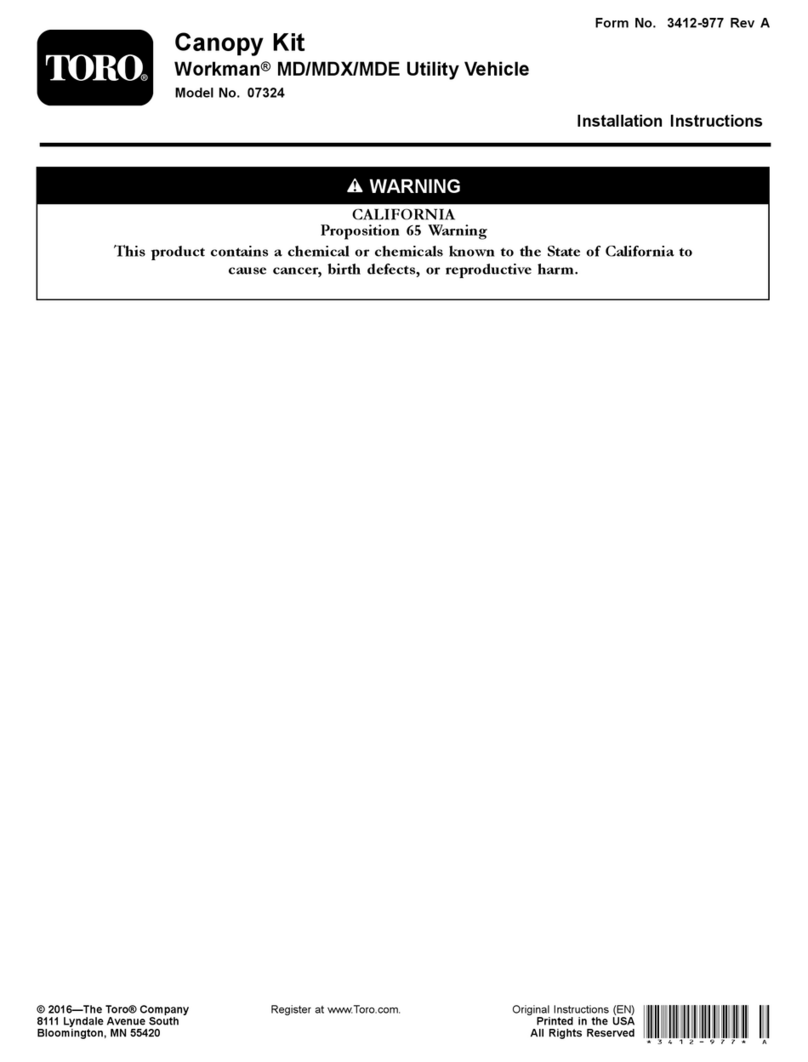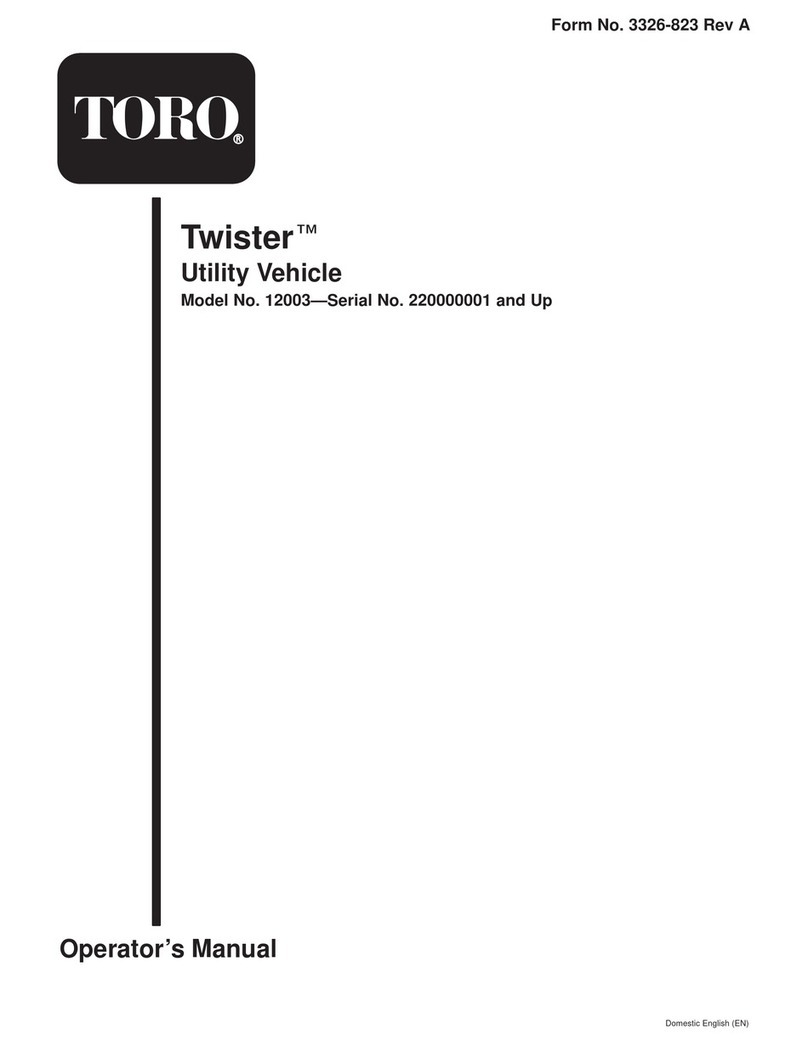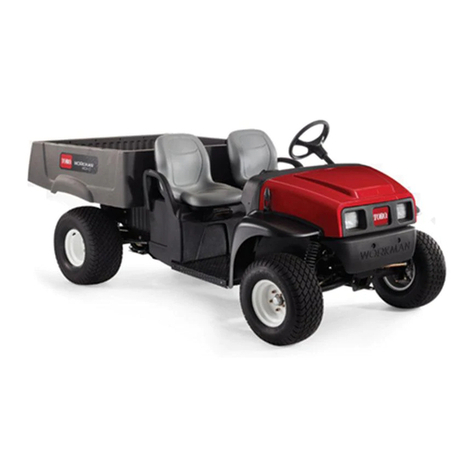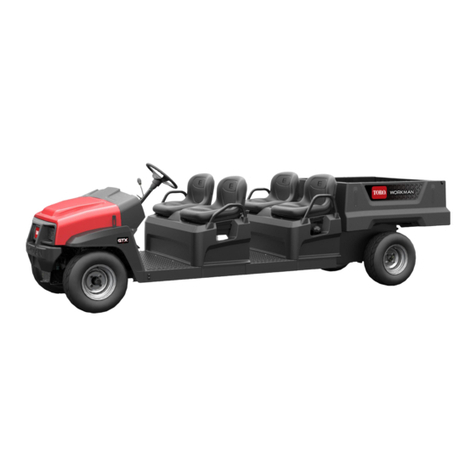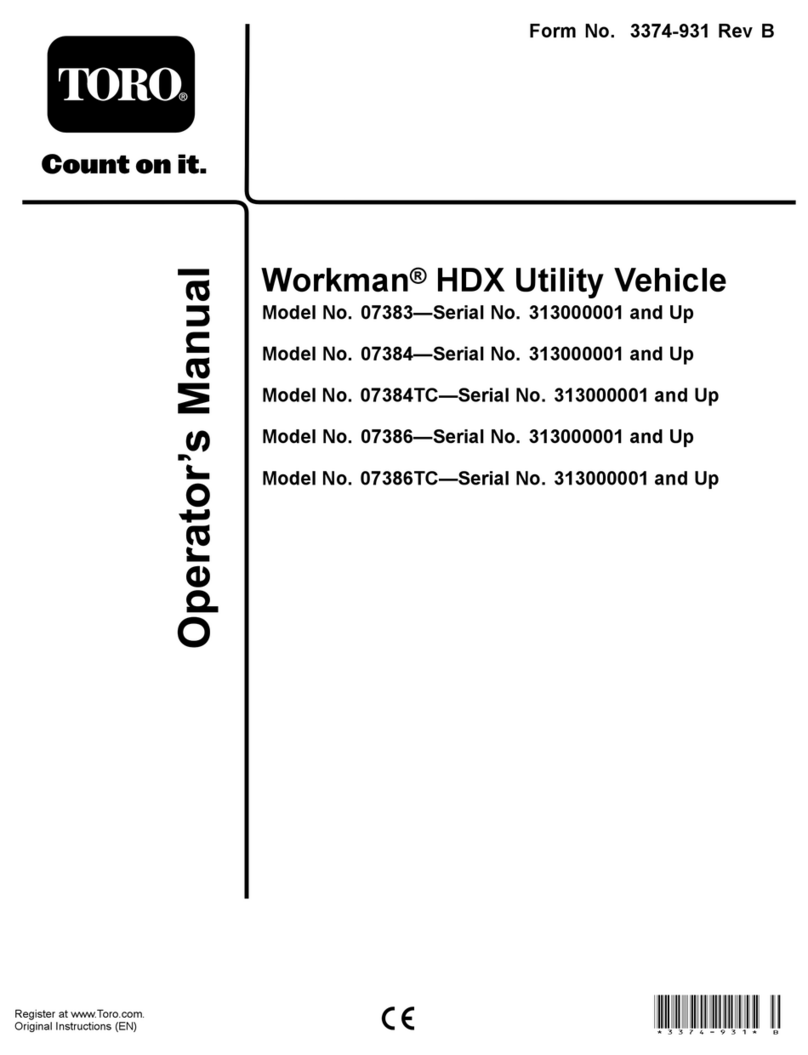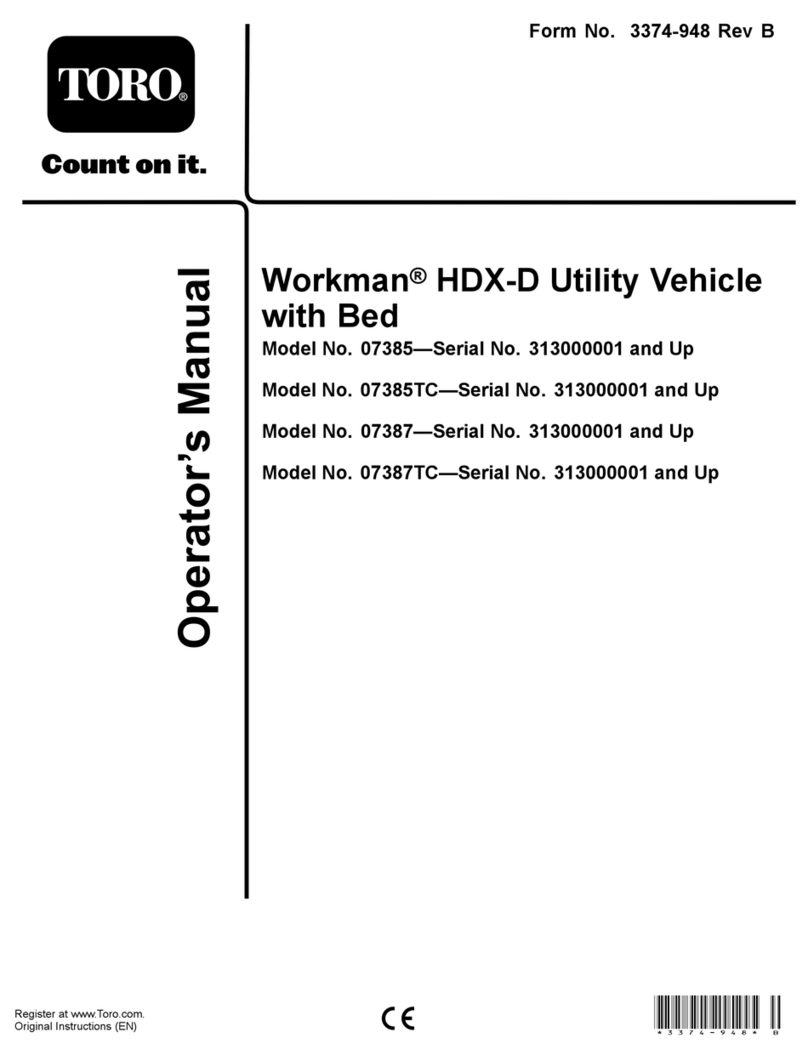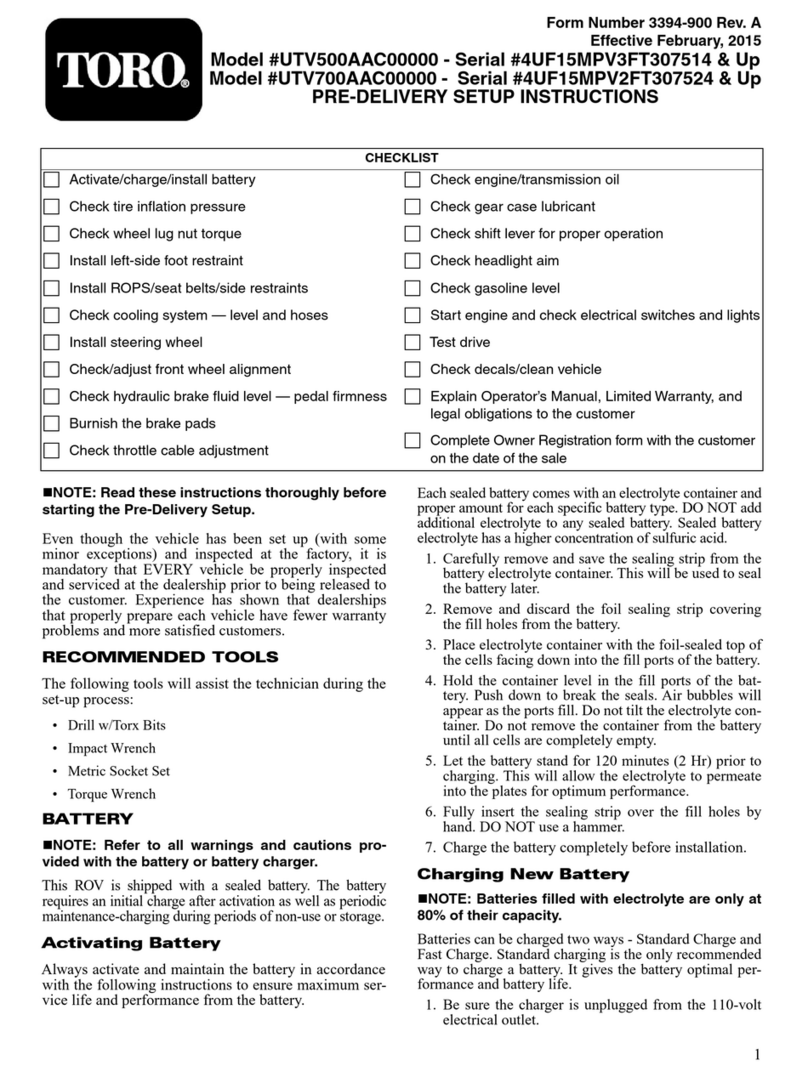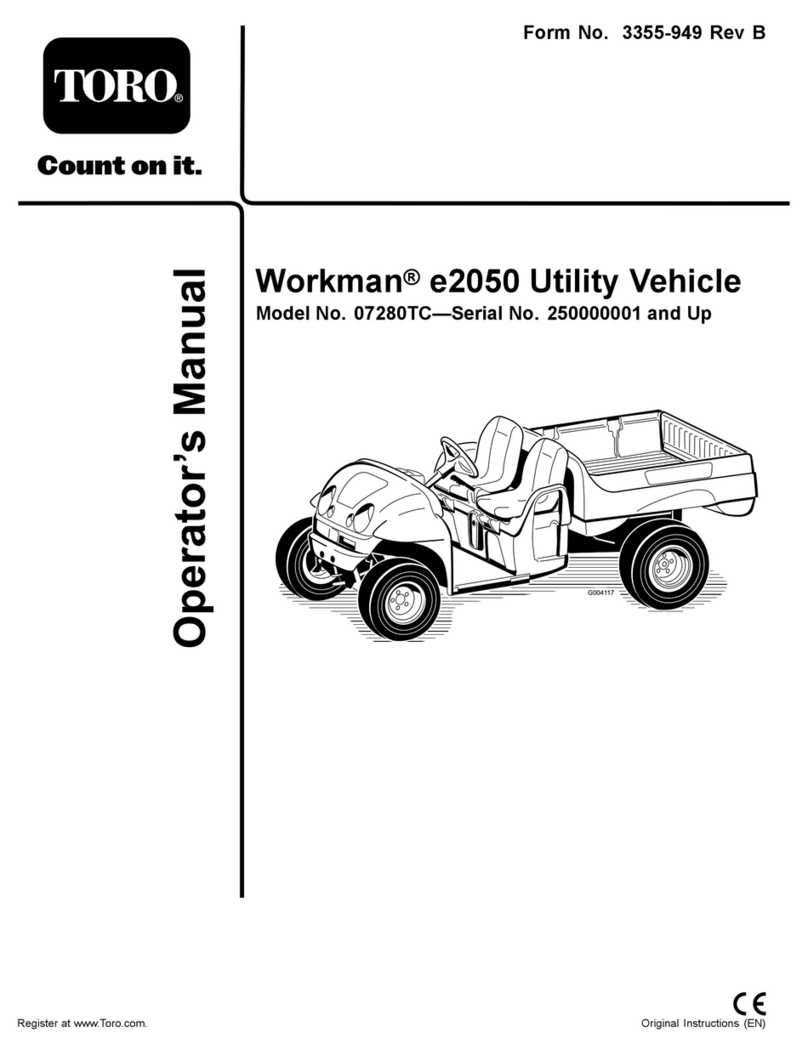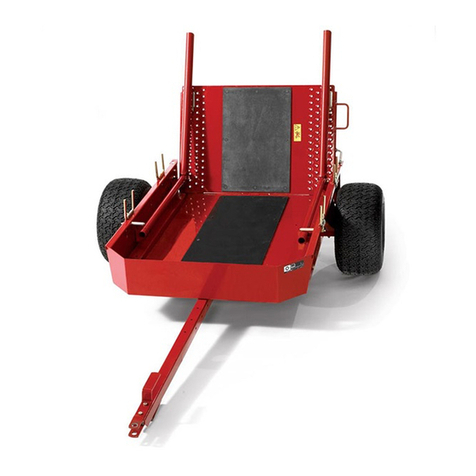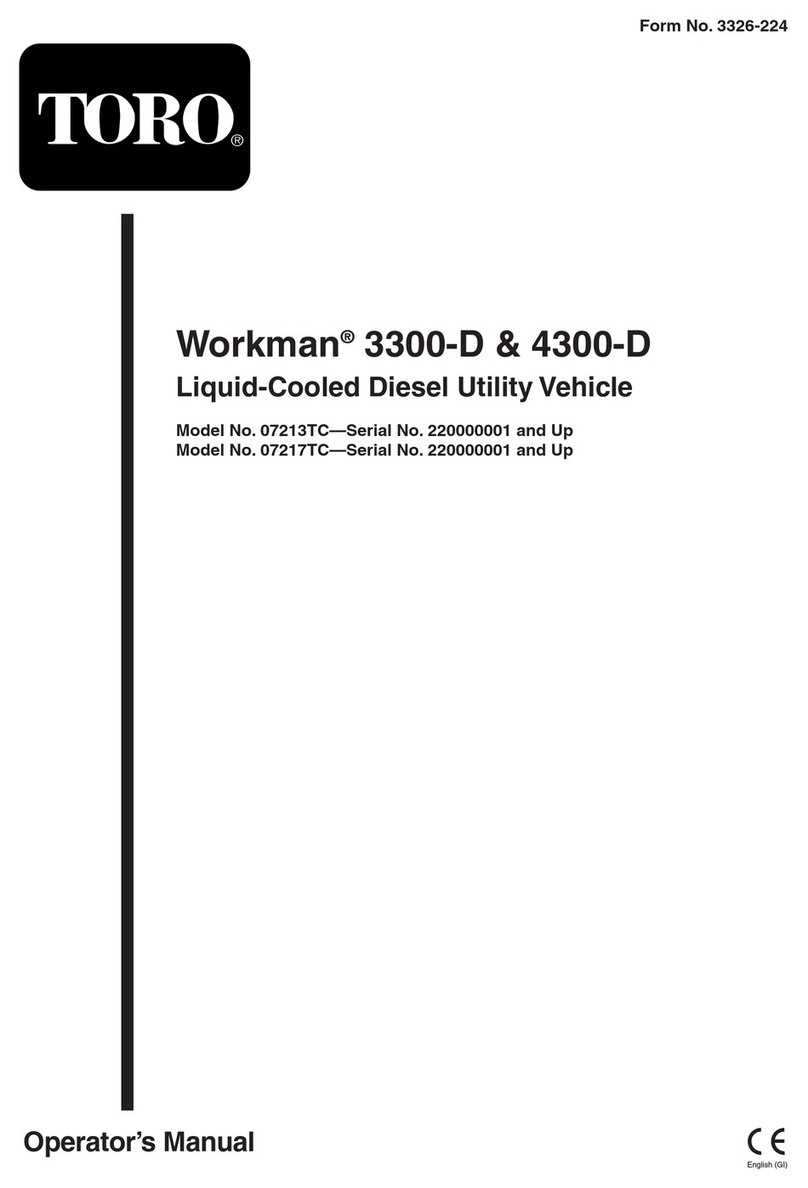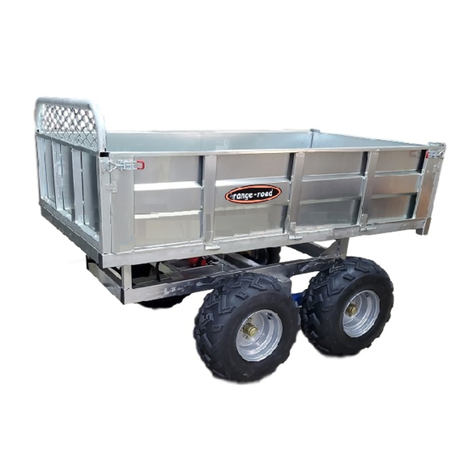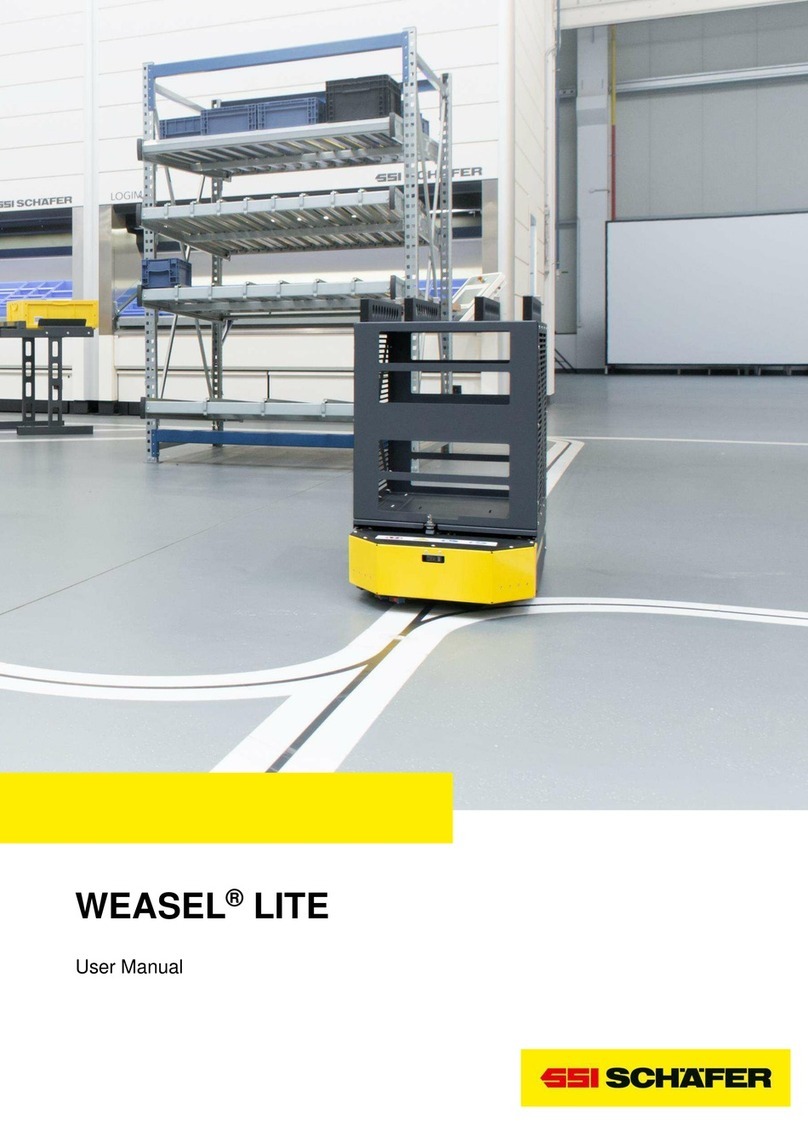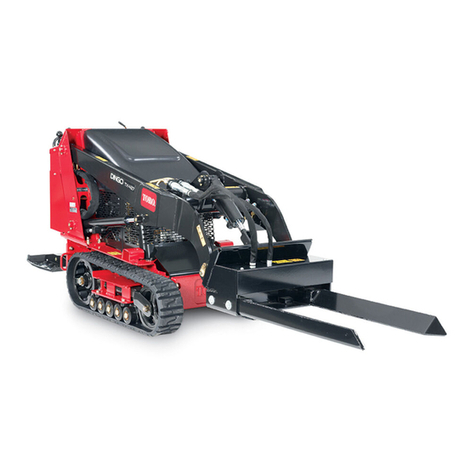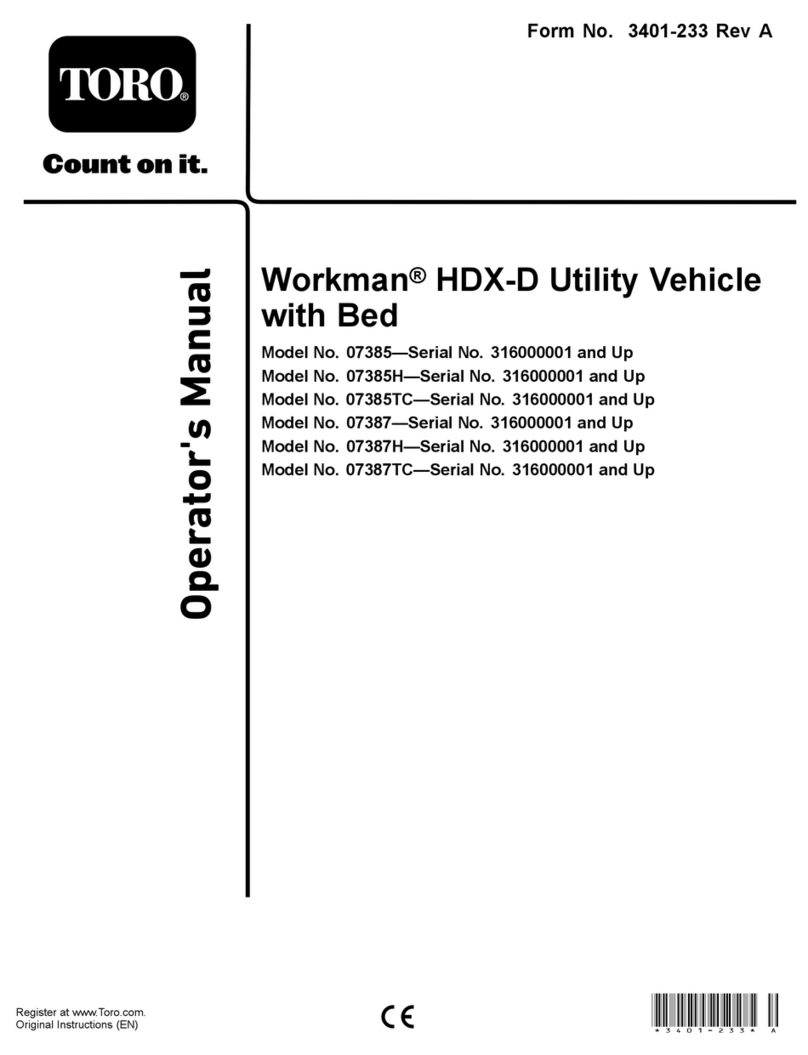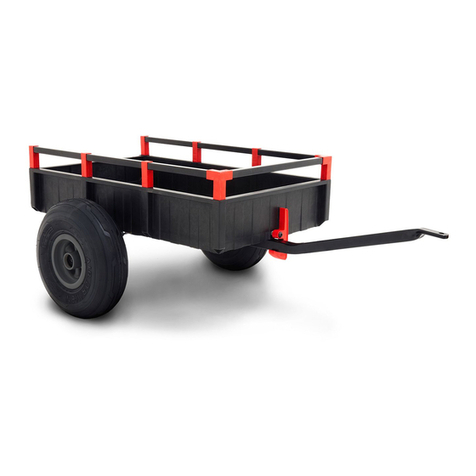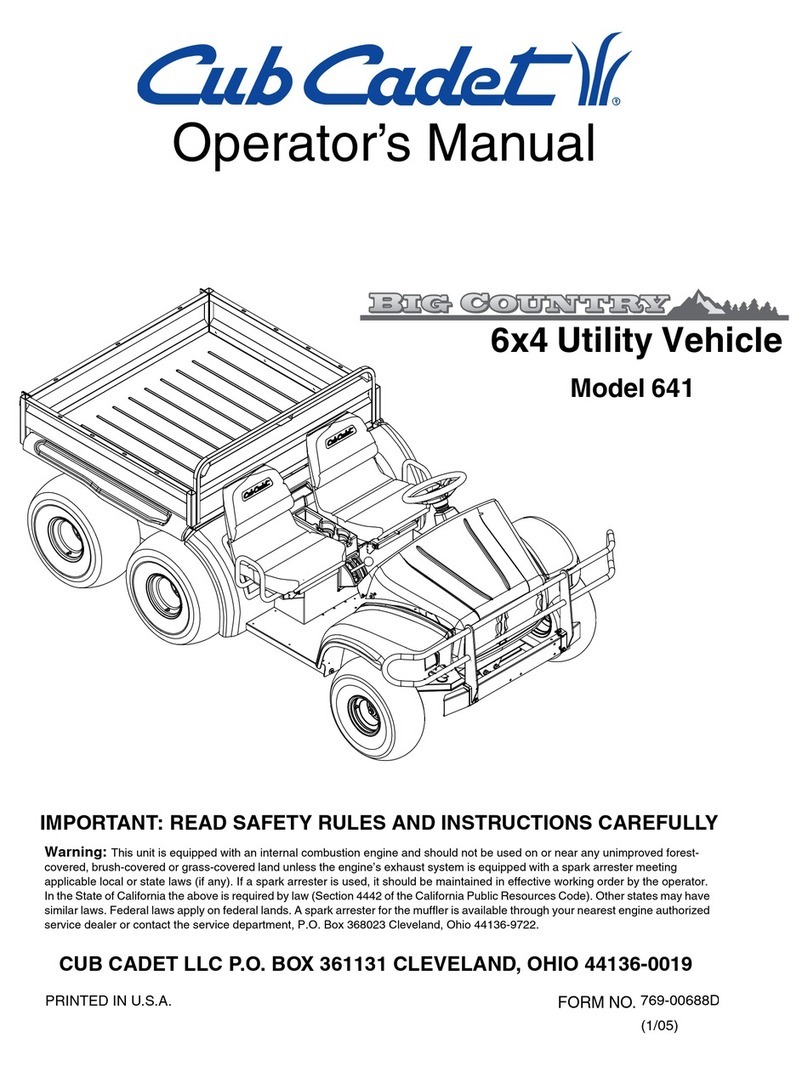
Contents
Safety...........................................................................4
Operation...............................................................4
SoundPressure.......................................................6
Vibration................................................................6
SafetyandInstructionalDecals.................................7
Setup...........................................................................12
1InstallingtheSteeringWheel(TCmodels
only).................................................................12
2InstallingtheRolloverProtectionSystem
(ROPS).............................................................12
3CheckingtheFluidLevels.....................................13
ProductOverview.........................................................14
Controls...............................................................14
Specications........................................................17
Attachments/Accessories........................................17
Operation....................................................................18
OperatingtheCargoBox.........................................18
CheckingtheEngine-oilLevel..................................19
AddingFuel...........................................................20
CheckingtheCoolantLevel.....................................21
CheckingtheTransaxle/Hydraulic-uid
Level.................................................................21
CheckingtheHighFlowHydraulic-uidLevel(TC
modelsonly)......................................................22
CheckingtheFront-differential-oilLevel(4-wheel
drivemodelsonly)...............................................22
CheckingtheTorqueoftheWheelNuts.....................23
CheckingtheTirePressure......................................23
CheckingtheBrake-uidLevel.................................23
StartingtheEngine.................................................24
DrivingtheVehicle.................................................24
StoppingtheMachine.............................................25
StoppingtheEngine...............................................25
BreakinginaNewMachine......................................25
CheckingtheSafety-interlockSystem........................25
EnsuringPassengerSafety.......................................26
EnsuringProperSpeed...........................................26
EnsuringProperTurning.........................................26
EnsuringProperBraking.........................................26
PreventingTipOvers..............................................27
OperatingonHills..................................................27
LoadingandDumping............................................27
UsingtheDifferentialLock......................................28
Using4-wheelDrive(4-wheeldrivemodels
only).................................................................28
TransportingtheMachine........................................28
TowingtheMachine...............................................29
TowingaTrailerwiththeMachine.............................29
UsingtheHydraulicControl....................................29
Maintenance.................................................................32
RecommendedMaintenanceSchedule(s)......................32
OperatinginAdverseConditions..............................33
PremaintenanceProcedures........................................34
UsingtheBedSupport............................................34
RemovingtheFullBed............................................35
InstallingtheFullBed.............................................35
RaisingtheMachine................................................36
RemovingtheHood...............................................37
InstallingtheHood.................................................37
Lubrication...............................................................38
GreasingtheBearingsandBushings..........................38
EngineMaintenance..................................................40
ServicingtheAirCleaner.........................................40
ChangingtheEngineOilandFilter...........................40
FuelSystemMaintenance...........................................41
CheckingtheFuelLinesandConnections..................41
ServicingtheFuelFilter/WaterSeparator...................41
ElectricalSystemMaintenance....................................42
ServicingtheFuses.................................................42
JumpStartingtheMachine.......................................43
ServicingtheBattery...............................................44
DriveSystemMaintenance.........................................44
ChangingtheFront-differentialOil(4-wheeldrive
modelsonly)......................................................44
InspectingtheConstant-velocityBoot(4-wheel
drivemodelsonly)...............................................44
AdjustingtheShiftCables........................................45
AdjustingtheHigh-to-LowCable.............................45
AdjustingDifferential-lockCable..............................45
InspectingtheTires................................................45
CheckingtheFrontWheelAlignment........................46
CoolingSystemMaintenance......................................47
RemovingDebrisfromtheCoolingSystem................47
ChangingtheEngineCoolant...................................47
BrakeMaintenance....................................................48
AdjustingtheParkingBrake.....................................48
AdjustingtheBrakePedal........................................49
BeltMaintenance......................................................50
AdjustingtheAlternatorBelt...................................50
ControlsSystemMaintenance.....................................50
AdjustingtheAcceleratorPedal................................50
AdjustingtheClutchPedal.......................................51
ConvertingtheSpeedometer....................................51
HydraulicSystemMaintenance....................................52
ChangingtheHydraulicuidandCleaningthe
Strainer..............................................................52
ReplacingtheHydraulicFilter..................................52
ChangingtheHigh-owHydraulicuidandFilter
(TCmodelsonly)................................................53
RaisingtheCargoBoxinanEmergency.....................53
Cleaning...................................................................55
WashingtheMachine..............................................55
Storage........................................................................55
3

